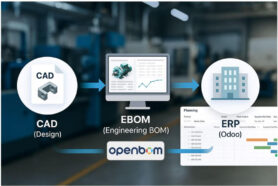
When you think of manufacturing, you automatically think of China. China has embraced being the manufacturing hub of the world for decades. However, manufacturing companies are starting to re-think their manufacturing strategy. With everything that has happened in the last few years, do manufacturing companies really want to continue to rely on China?
While we all know the positives of manufacturing in China, such as the manufacturing knowledge they have, labor costs, and more, this article will take a look at it from a different approach. It’s looking to see if the negatives are starting to outweigh the positives.
I’ll look at the risks associated with manufacturing in China and how China can be losing its spark.
Long Shipping Times
Shipping products from China has always been long. Unfortunately, the lead times now are a bit longer than historical numbers. A few months ago it could take 45 days + to ship from Shenzhen to LA.
The trends of the modern consumer are also changing which means brands need to adapt to them. The modern consumer wants things faster than ever. They want customization and products made specifically for them, rather than the masses.
As a response to fight shipping delays and also the amount of time in advance it takes to book a container, companies have been air freighting more products. But, air freight just kills the margins that made China attractive in the first place.
Poor Communication & Transparency
One of the necessities for agile development is clear communication. If you are unable to communicate appropriately then you will constantly have delays. While everyone you deal with in China will most likely speak English and they will have good English skills, they can have poor communication skills.
In order to run a project, communication becomes important. Having poor communication skills creates an environment in which you feel the supplier or contract manufacturer is not being transparent. This leads you to believe they are hiding things and are trying to nickel and dime you.
Politics
The effects of government policies have an effect on manufacturing. The most obvious one is the 25% tariff on Chinese goods. Manufacturing companies have tried to find solutions by shipping to Mexico but there are extra costs and lead times added to this.
Other uncertainties
In the past few months, we have seen factories unable to ship products for a number of reasons, such as:
- COVID: Factories shut down when there is an outbreak in a city. Also, when there is a COVID outbreak, cities close down, and borders from one city or district to another are also closed. There is no flow of material.
- Port Closures: Ports shut down when there is a COVID outbreak
- Power Outages: The government closed factories to limit the amount of electricity used
The pandemic has highlighted the importance of a diverse supply chain. Here, diversity does not mean two suppliers that are both in Shenzhen. But instead, two different supply chain strategies that do not rely on each other.
While China is still the manufacturing hub of the world, brands are forced to re-think their manufacturing strategy or create a backup plan.
What Can You Do Today?
We are in an age of uncertainty. Therefore, having control of your manufacturing data, such as your bill of materials (BOM), CAD files, and more are a must. Allowing your supplier to control this data makes you reliant on them. The first thing you need to do is to gain control of your product data.
Using OpenBOM can give you the independence of any contract manufacturing company. Once you have it loaded in OpenBOM you can instantly share it with other CMs and re-route your manufacturing path to a different continent, country, or company.
What you need is a single source of truth. One centralized platform where you, your team, CM, and others are able to access the most up-to-date information.
OpenBOM is a cloud-based platform to manage your engineering and manufacturing data. Companies from startups to Fortune 500’s use OpenBOM to create a centralized database to bring in, store and manage their manufacturing data. With this infrastructure, users also use OpenBOM to streamline both their change management and PO processes.
If you need to improve the way you manage your data and processes, contact us today for a free consultation.
Regards,
Jared Haw
Join our newsletter to receive a weekly portion of news, articles, and tips about OpenBOM and our community.










